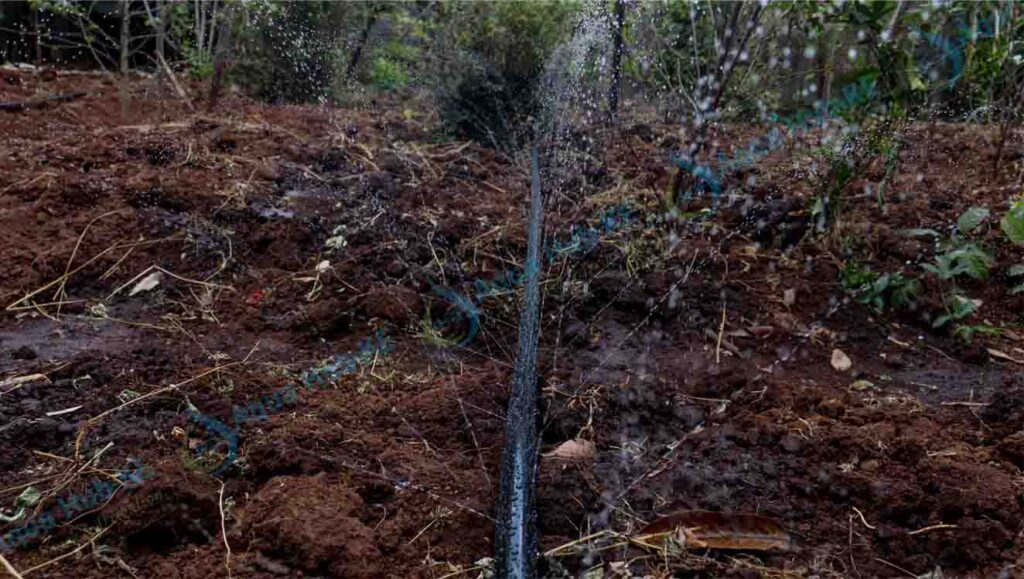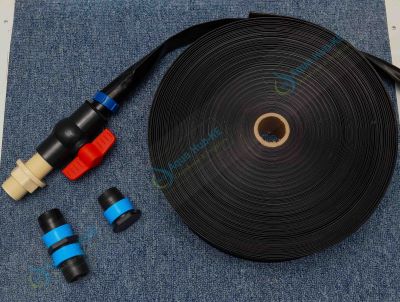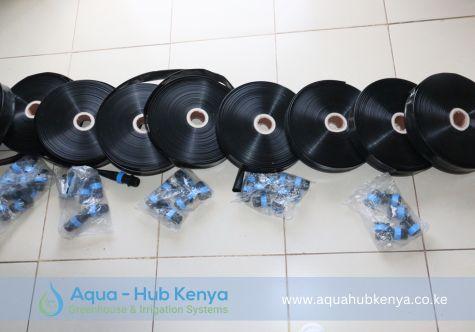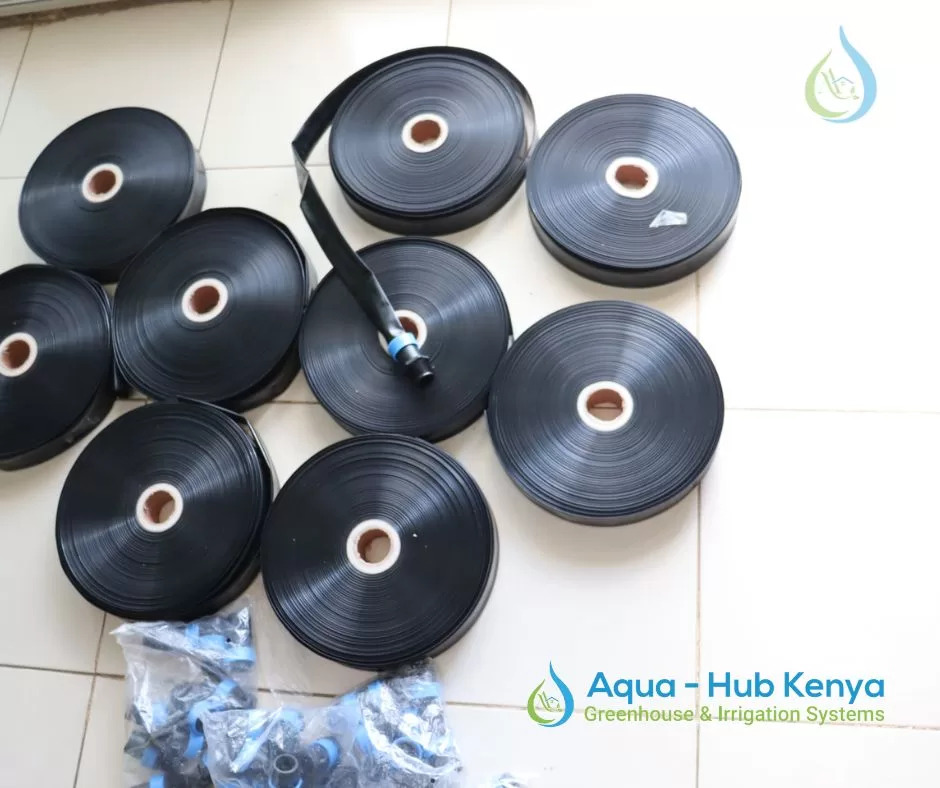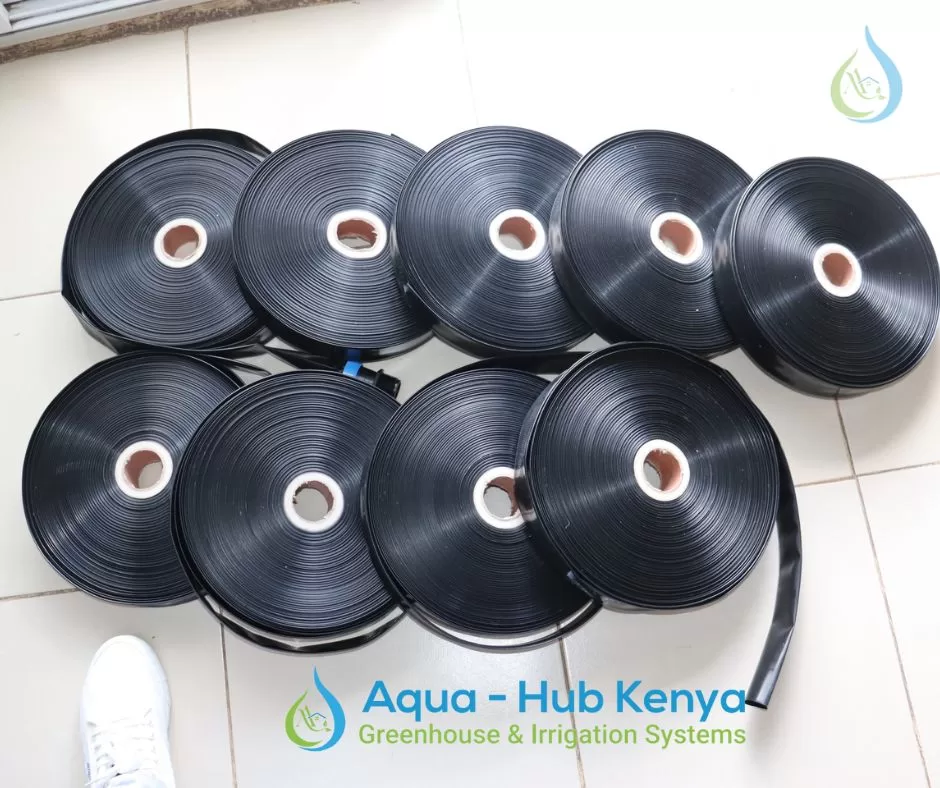Rain Hose Pipes for Irrigation Farming
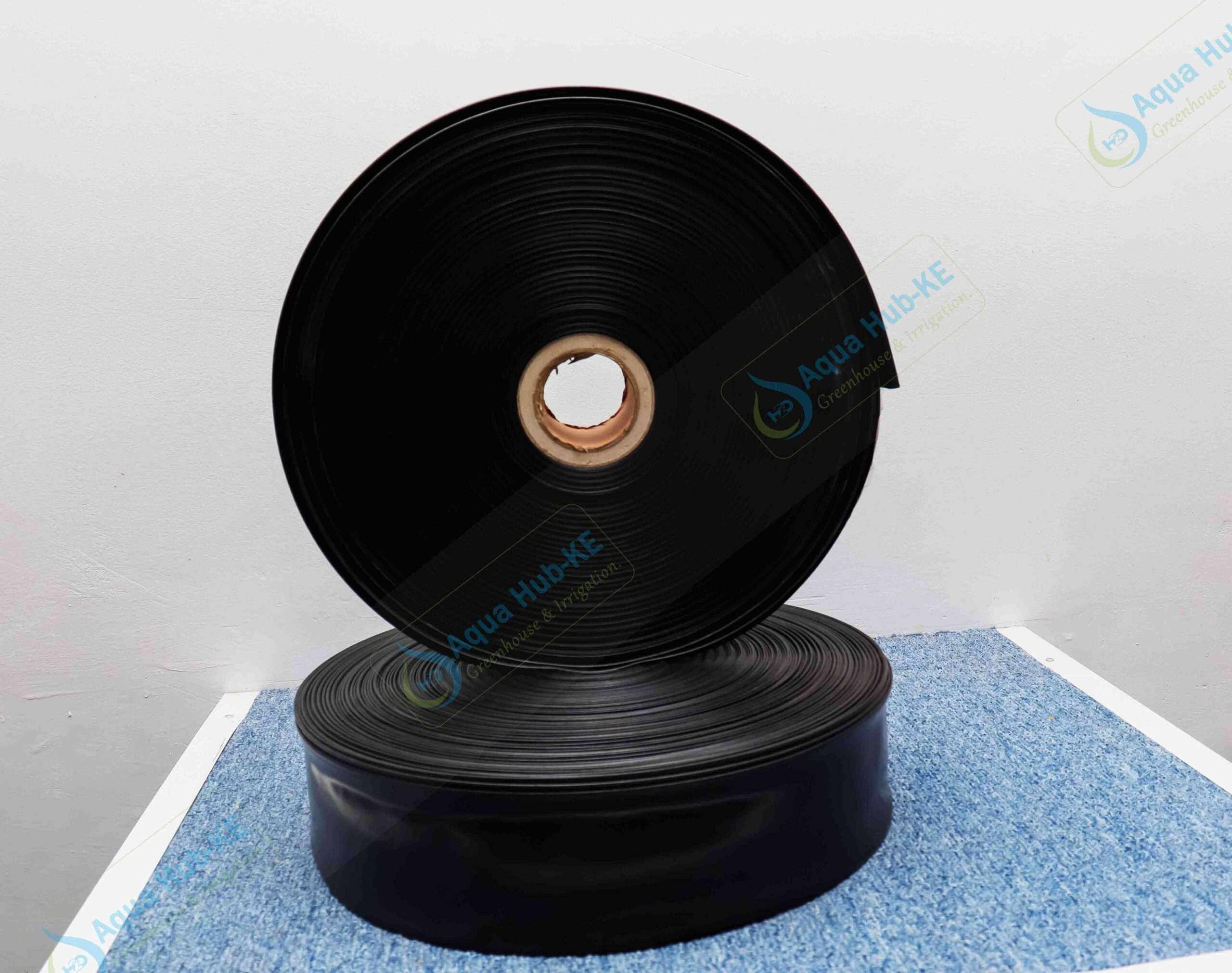
A Rain Hose pipe is a laser punched pipe that is used for spray irrigation of various crops, animal feeds and grasses.
The pipe is a flexible polytube that is made of UV treated resin that makes it reliable for water supply.
Specifications of Rain Pipes
- The pipes come in diameter sizes ranging from 25 mm to 50 mm sizes.
- Wall Thickness of the pipe can be 0.2 mm-0.4 mm.
- Spray radius of 2-6 m as per the diameter of the pipe.
- Working pressure of 0.8 – 1.5 bar
- Spray height of 1.5 -2 m.
- Full roll length of 100m.
- The Length requirement for an acre range from 800m-1000m.
- Maximum Laying of 70m.
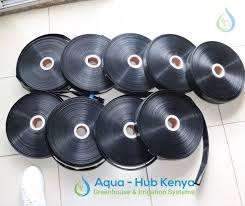
Features of Rain Hose Pipe
Spray Irrigation
The pipe system distributes water in a rainfall like effect. It has numerous holes spaced close along the pipe length for spray irrigation.
Thin Spray Jets
Rain hose tiny holes release smooth thin sprays which do not damage plants. Due to less force the spray causes no harm on the leaves and stem of young plants.
Uniform distribution
The pipe has uniform hole size and spacing on the entire pipe thus equal spray rate to the crops. It is possible with less pressure loss and absence of strong winds.
UV resistance
Polytubes are materials of UV treated resins. They can resist harmful UV rays and harsh conditions.
Non-Corrosive
The pipes are non-reactive with water, air, and fertilizers. The feature makes them more effective and operational for a long time.
Tensile Strength
Rain hose irrigation pipes can withstand high pressure and mechanical forces of pull or tear. In case of high-water pressure, they cannot burst.
Requirements for Rain Hose Irrigation System
- PVC or HDPE mainline Pipes
- Saddle Clamps or Tee connectors.
- Male Adapters
- Ball Corks
- Water Filters
- End Caps
- Rain Hose Tapes
- Teflon Tape
- Hand drill
- Elbow connector.
- Solvent joint or glue sealant for PVC pipes
- Water Pump
How to Install Rain Hose Systems
- Set up a pump near the water source. Insert the suction pipe on the water source (River, Well)
- Lay the mainline pipe on the ground. Ensure you have the required pipe length.
- Connect the mainline pipe to the pump at the start point.
- Make holes in the mainline pipe for connection of rain hose pipes using a hand drill.
- Open the saddle clamps and insert rubber rings on the inside part.
- Slide saddle clamps to fit onto the punched holes. Tighten the bolts of the saddle clamps.
- Apply Teflon tape onto threads of a male ball cork.
- Insert into the threaded outlet of the saddle clamp and tightly screw the ball cork.
- Connect a female adapter to the ball cork.
- Connect a rain hose tape to the male adapter and tighten the cap to ensure a secure connection.
- Flush the system.
- Use end caps to seal the mainline pipes and ends of rain hose pipes.
- Using a coupling connect rain hose tapes in the middle of the farm sections.
Advantages of Rain Hose pipes
- Easier to install and operate.
- They are more economical to use unlike other methods like Sprinkler irrigation.
- Low pressure is needed to distribute water with rain hose pipes.
- The pipes and fittings are cheaper compared to other irrigation systems,
Applications
- Irrigation of leafy vegetable such as spinach, kales and lettuce
- Cabbage, groundnuts, and carrots
- Irrigation of cocoa, Tea and fruits such as dragon fruit.
- Watering lawns
- Irrigation of animal feeds such as Napier grass.
Prices of Rain Pipes in Kenya
The cost of Rain Hose pipes depends on the length and diameter size of the pipe.
Rain hose pipes and fittings are available at Aqua Hub Kenya in diameter sizes of 25mm, 32mm, 40mm and 50 mm sizes. We offer affordable prices.
Call 0790719020
Frequently Asked Questions
(1) What is the material of Rain Hose Pipe?
A: Polytube or PE
(2) Is Rain Hose Pipe resistant to UV radiation?
A: Yes. High quality plastic body withstands UV radiation.
3) What is the Maximum laying length for Rain Hose pipes?
A: Spray tube can be laid up to 70 meters (according to different size). Pressure must be ensured to be 0.8-1.5 kg / cm².
(4) What is the required length of rain hose tapes for 1 acre of farm?
A: 800-1000m

